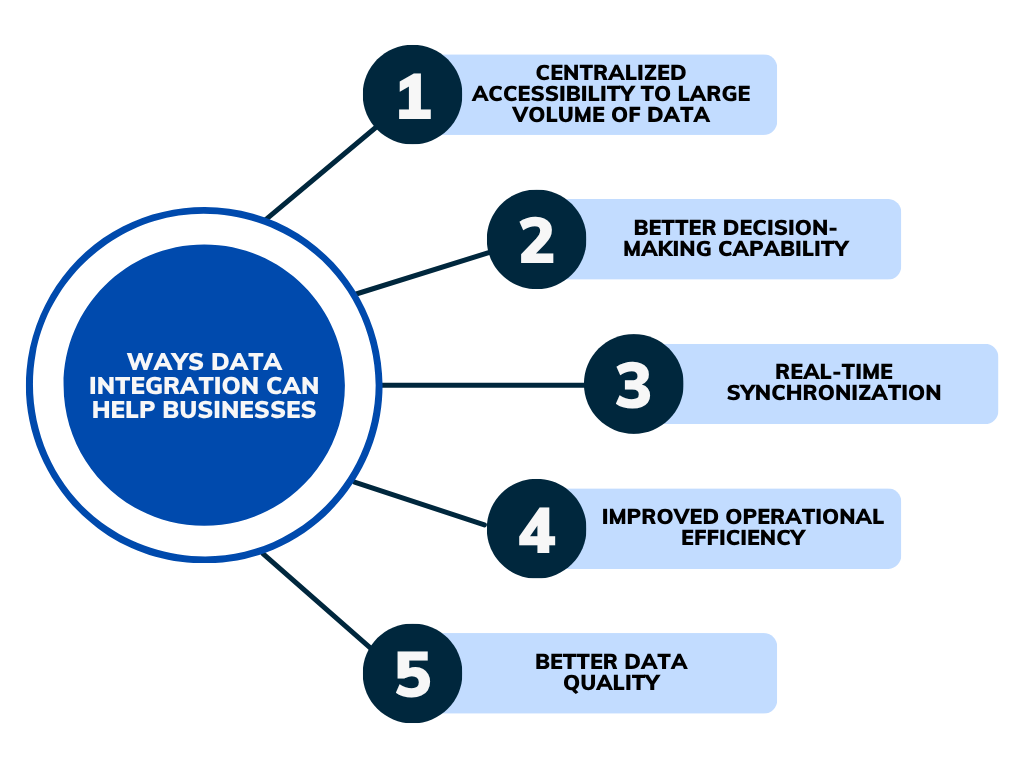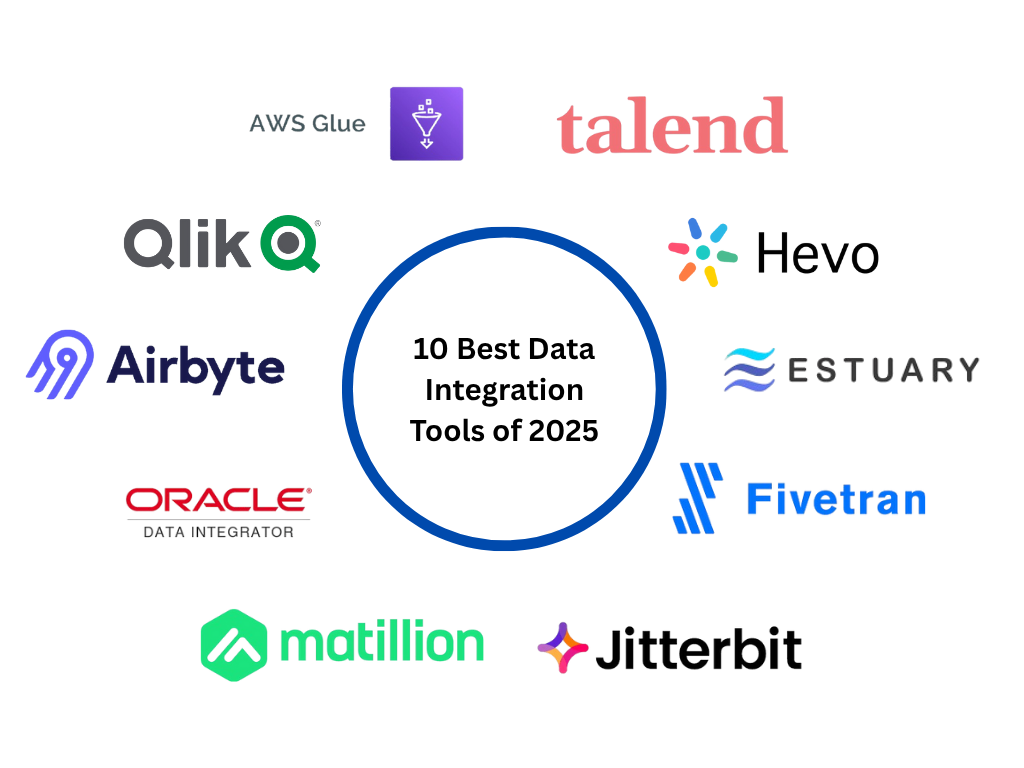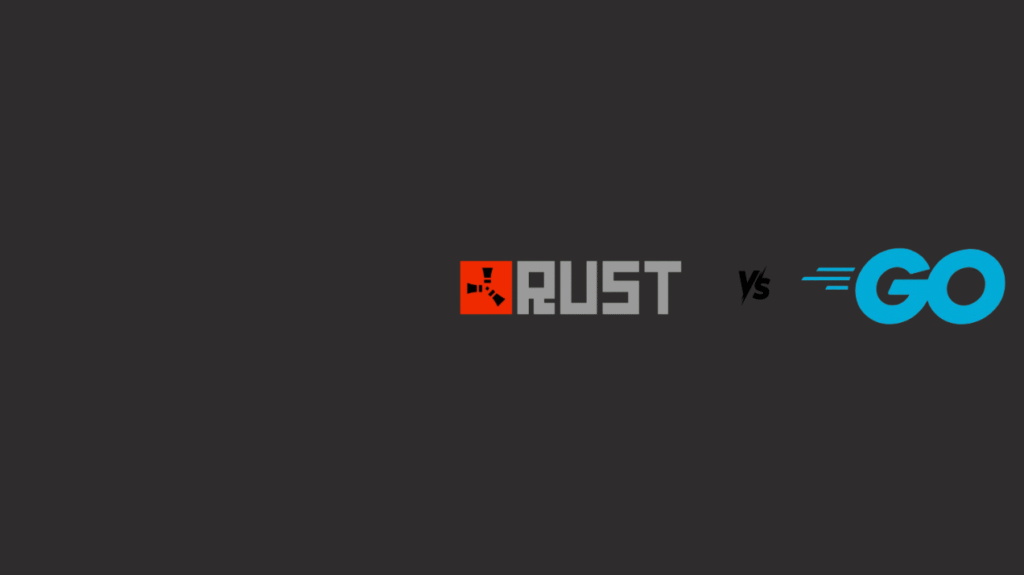However, businesses are now experiencing an abundance of data from diverse sources, making it difficult for them to manually combine, harmonize, and analyze the data efficiently. Therefore, the use of data integration tools can seamlessly automate the process.
The purpose of data integration tools is to combine data sets from SaaS apps, streams, files, databases, and other sources and load them on a single unified dashboard. Thus, you will have a centralized overview of all the metrics, crucial for making important business decisions.
Today, there are several tools with impeccable features, performance, and reliability perks, making it difficult for you to pick the best among them all. Therefore, this article brings to you a well-researched and tested list of top data integration tools for you to choose from.
How Do Data Integration Tools Help Businesses?

Industries like healthcare, financial services, manufacturing, retail, government agencies, and others have already adopted data integration as a critical part of their business operations. It is mostly because data integration solutions are meant to improve organizational decision-making, operational efficiency, and data management.
To help you better understand how the best data integration tools help businesses, here are some benefits you can count on:
1. Centralized Accessibility to Large Volume of Data:
By extracting data from diverse sources and loading them onto a single dashboard or repository, you will be breaking down all potential data silos. This way, you can ensure that every member of your team has access to the same consistent and accurate data.
2. Better Decision-Making Capability:
Using the real-time data integration efficiency, businesses will have the most recent information about their sales, customer behavior, marketing performance, and other key metrics. Thus, such accessibility to updated data will help your team make more informed decisions on implementing improvements or new business strategies.
3. Real-Time Synchronization:
Some of the top data integration tools have CDC (Change Data Capture) capabilities, ensuring that any change in data at the source systems will be reflected instantly within the target storage systems. Thus, you will have accurate analytics for the business, and you can use them for responsive applications.
4. Improved Operational Efficiency:
When you use dedicated tools for automating the ELT (Extract Load Transform) and ETL (Extract Transform Load) workflows, it will reduce the manual efforts of your team. Thus, you will save a lot of time in analyzing the data and also minimize errors in the data processing phase.
5. Better Data Quality:
Most data integration tools have built-in transformation and vetting capabilities. Using them, you can seek clean, enriched, and normalized data that can directly align with your organizational standards.
10 of the Best Data Integration Tools for You to Consider!

To help you obtain the best data integration perks for your business operations, here are 10 of the best tools you can use for the purpose:
1. Qlik
It is a powerful data integration platform built for delivering real-time synchronization, analytics, and transformation of data from diverse sources. The best thing about this tool is its ability to combine data sets from multiple sources and support integration for both cloud as well as on-premise environments. Qlik can support use cases such as machine learning, data warehousing, and analytics.
Some of the popular businesses, such as Bank of America, Honda, HSBC Bank, Uline Inc., and others, have adopted Qlik for their data integration needs. The key features of this tool include:
- Continuous data updates in real-time from multiple sources to the cloud platforms such as Databricks and Snowflake.
- Built-in tools for cleaning, transforming, and automating data workflows, without the need for added scripting.
- Comes with tools for identifying issues within the data sets and tracking associated operations.
2. AWS Glue
AWS Glue is one of the widely known fully-managed and serverless data integration solutions. It eliminates most or all of your infrastructure management concerns associated with moving data from multiple sources to a single warehouse. This cloud-native tool supports automating data processing and ETL needs. Identifying, preparing, and combining the data for analytics, application development, and machine learning are made easier with AWS Glue.
Companies like Capgemini, EPAM Systems, GoDaddy, and PicPay have adopted AWS Glue as their serverless data integration platform. Some exceptional features of this platform include:
- Comes with a serverless architecture, which means it can automatically provision required resources based on demand.
- Supports seamless data discovery with its centralized metadata repository.
- Automatically generates ETL code in Scala or Python for Apache Spark.
- Drag-and-drop interface for easy visual ETL job creation.
3. Talend
Talend is yet another versatile data integration solution, enabling businesses to connect and integrate data from diverse sources. It comes with a user-friendly interface and is backed by robust features for easily accessing, transforming, and integrating data onto a single unified dashboard.
Businesses like Walmart, Apple, IBM, and UnitedHealth Group are already leveraging the potential of Talend. Some of the noteworthy features of this data integration tool include:
- Easy drag-and-drop interface for the team to execute data integration without the need for writing complex code.
- Comes with pre-built connectors for all popular databases, cloud services, and applications.
- Has an open-source version, Talend Open Studio, which enables users to integrate data at no additional cost.
4. Hevo Data
It is a popular no-code data integration tool, meant for business, technical, and non-technical users. Hevo Data enables you to transfer data easily from more than 150 sources in real-time, and move them into cloud-based data warehouses such as Redshift, BigQuery, Snowflake, and others.
Companies like ThoughtSpot, Postman, Meru, Deliverect, and others are using Hevo Data to support their operations across delivery, e-commerce, and SaaS services. Some of the features of Hevo Data for data integration are:
- Supports easy customization of ELT/ET: pipelines for transferring data across apps and warehouses.
- Architecture is built for changing and scaling automatically as per the load.
- Flexible deployments for cloud, private, or hybrid VPC deployments.
- Automated error handling.
5. Estuary Flow
This platform is built to support batch and real-time data integration, enabling you to unify both historical as well as streaming data, without the need for multiple tools. Estuary Flow is designed for moving data with a low latency of <100 milliseconds. If your business relies on accurate and fresh data for making decisions, Estuary Flow can be a reliable bet for you.
Popular brands like Xometry, Prodege, Glossier, Lovespace, Shippit, and others are already using Estuary Flow for their data integration needs. To help you better assess this tool, here are some features of it for you to count on:
- Supports scheduled batch data processing and real-time streaming.
- Enables CDC for capturing changes in source databases with an end-to-end latency of under 100ms.
- Includes the option of open source, private cloud, and SaaS cloud deployment.
6. Fivetran
It is a cloud-based and fully-managed data integration solution, built specifically for handling ELT workflows. If your business needs a platform that can centralize data from several sources without spending productive time in writing or maintaining scripts, Fivetran is the tool for you. It automates the entire process of extracting, loading, and transforming data into your chosen warehouse.
Top companies like OpenAI, HubSpot, BlackRock, Autodesk, Cemex, and Sakes have adopted Fivetran as their data integration tool. Following that, some of the standout capabilities of Fivetran for you to take note of are:
- Automated data pipelines that need minimal maintenance and ensure a high uptime of 99.9%.
- Supports hybrid deployment for keeping the sensitive data secured within your environment.
- Enables end-to-end security with comprehensive certifications like HIPAA, GDPR, SOC 1 & 2.
- Easy setup with most connectors, and automates schema handling.
7. Airbyte
An open-source and sophisticated data integration engine, Airbyte, provides businesses with the flexibility of moving data wherever they need. It means you can move data to a data lake, database, or a warehouse. The best part about Airbyte is, you will have complete control over your data pipelines and won’t be restricted by the vendors’ rules or ecosystem.
Companies such as Klaviyo, Accenture PLC, Cognizant Technology Solutions Corp, and others are using Airbyte for its data integration capabilities. Some of the noteworthy features of Airbyte for you to feel convinced about adopting it are:
- Comes with an extensive range of 400+ pre-built connectors.
- Supports seamless data flow with automated schema evolution.
- Enables CDC for quick real-time data updates.
- Supports Python integration using PyAirbyte.
8. Oracle Data Integrator (ODI)
A single unified data integration solution, ODI, combines data movement, quality management, synchronization, and added services, all under one roof. It is more like an enterprise-class tool that employs the ELT architecture. Oracle is different from other ETL tools as it leverages the processing power of target databases to improve its functional efficiency.
Popular brands like Zoom, Toyota, FedEx, and Uber use ODI for addressing their data integration needs. Beyond that, some features of this tool that you must be aware of include:
- Supports the ELT architecture for initiating data transformations on target servers and minimizes the overall infrastructure costs.
- Comes with pre-installed connectors for most of the popular databases.
- Enables unified monitoring by integrating ODI with Oracle Enterprise Manager.
- Supports real-time event processes with the CDC framework.
9. Matillion
Matillion is a modern-day data integration platform that combines ETL capabilities with AI features. It is an all-rounder solution that can enable your team to build & manage the data pipelines while utilizing the processing power of the chosen cloud platform.
Some brands like Simple Tire, Zscaler, and DocuSign use Matillion for tasks like extracting, transforming, and loading data into the chosen cloud warehouses. The key features of Matillion include:
- Supports intelligent data integration in a unified platform.
- Comes with PipelineOS for dynamically allocating resources by assessing the workload necessities.
- Backed with 250+ pre-built connectors.
- Enabled with AI capabilities through Matillion Copilot, which accelerates the pipeline creation.
10. Jitterbit
Jitterbit is a low-code yet efficient data integration tool, built to bridge the gaps between multiple disparate systems. The AI-infused features in this tool enable businesses to seamlessly automate data processes or transfers. Thus, the manual efforts are reduced, and the project delivery pace is accelerated.
Brands like McKesson, Target, Verizon, Santander Bank, and Salesforce, alongside several other companies, use Jitterbit for data integration. Some of the best features of Jitterbit include:
- It comes with a low-code integration environment, alongside a drag-and-drop interface.
- Processes asynchronous messages through the built-in Message Queue Service.
- Mapping tools for efficient and powerful data transformation.
Look Out for the Best Data Integration Tool to Address Your Business Needs!
With this, you now have a clear overview of the 10 best data integration tools, with their individual features highlighted in brief. However, there is no one-size-fits-all solution with the data integration tools!
You must pick a tool depending on your business needs, budget, and scalability requirements! For instance, whether you need real-time streaming of data, an open-source nature, or a plug-and-play solution, there are different tools available to meet your needs.
Do a thorough analysis of the data integration solutions listed above, and opt for their free trials to experience the features and functionalities they offer. Go ahead and build your scalable and real-time data pipelines, making analysis and business decision-making seamless.



